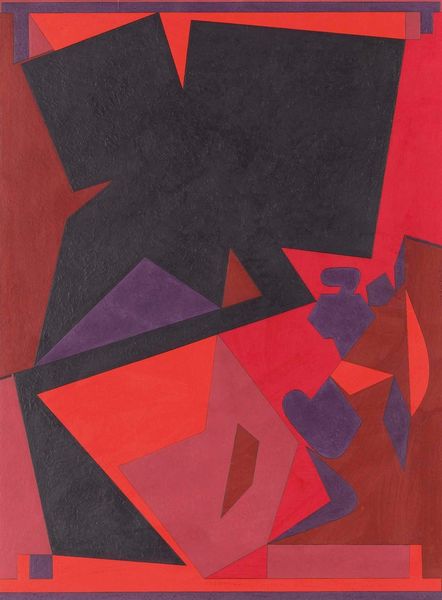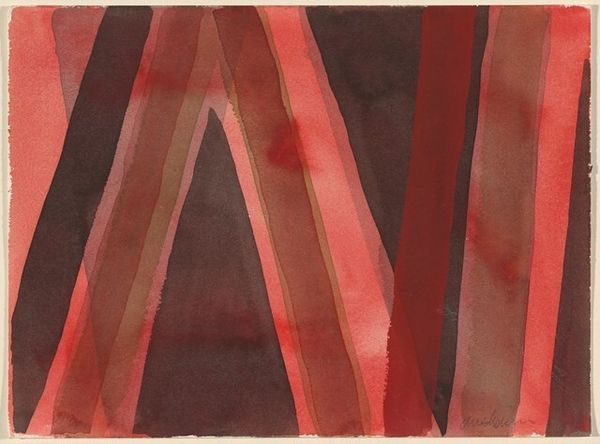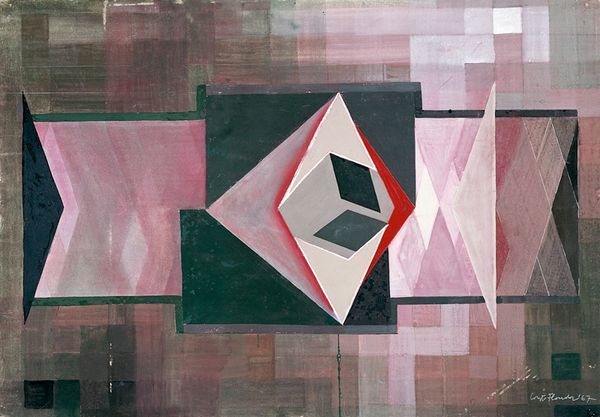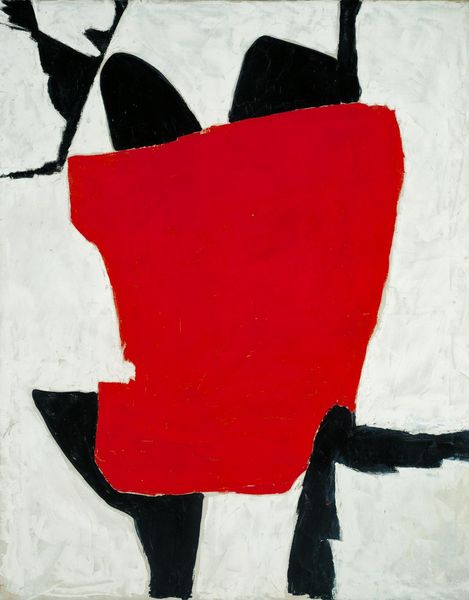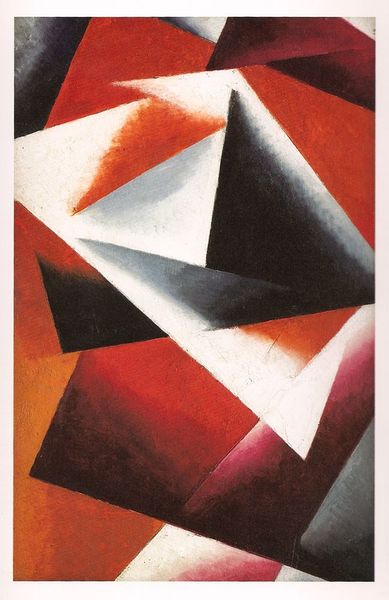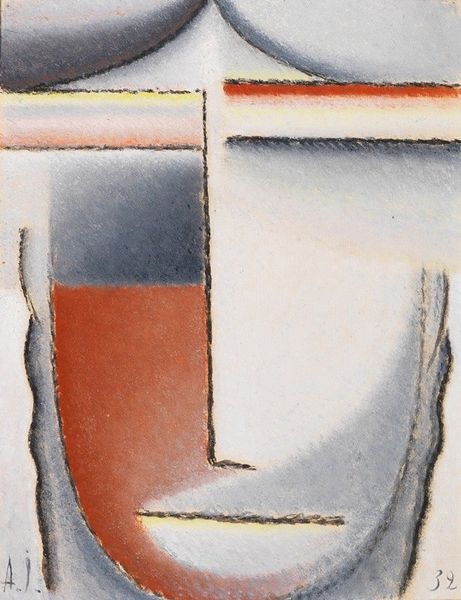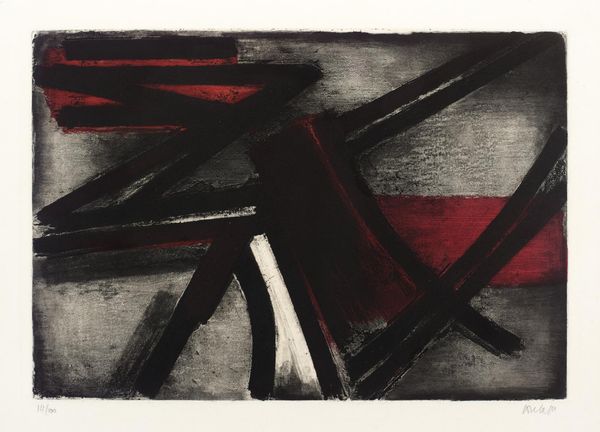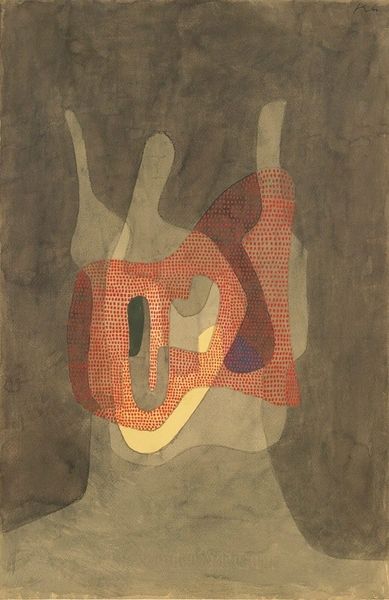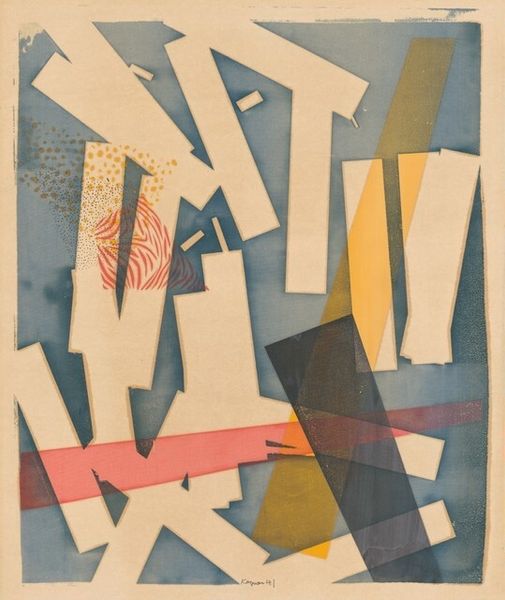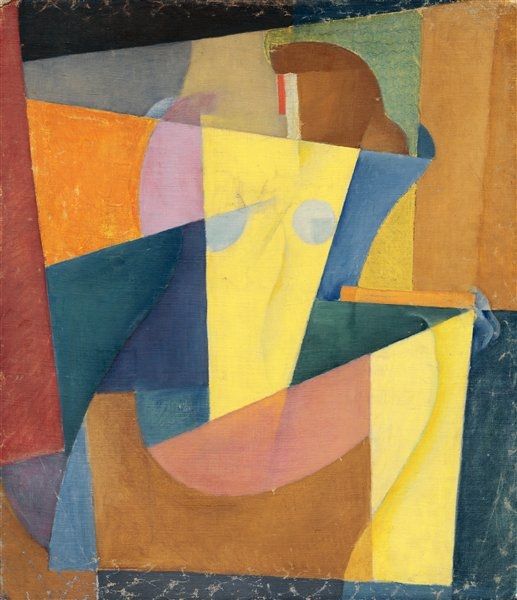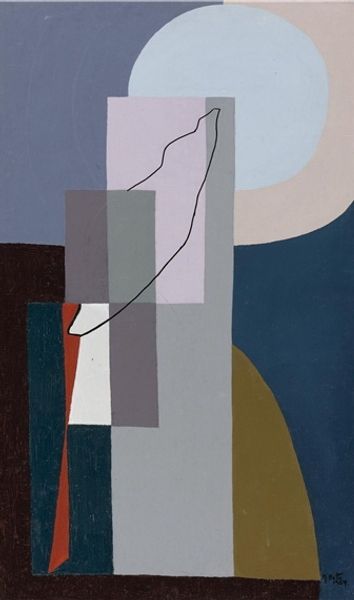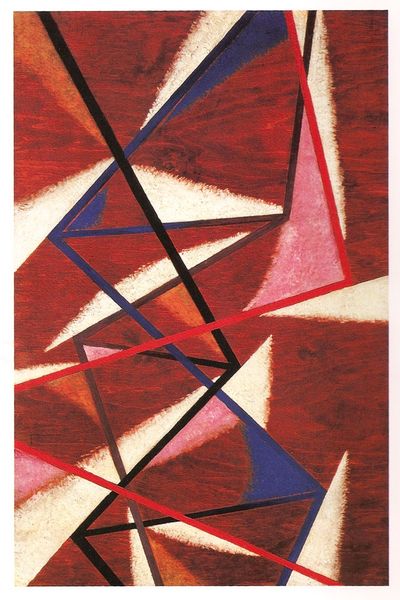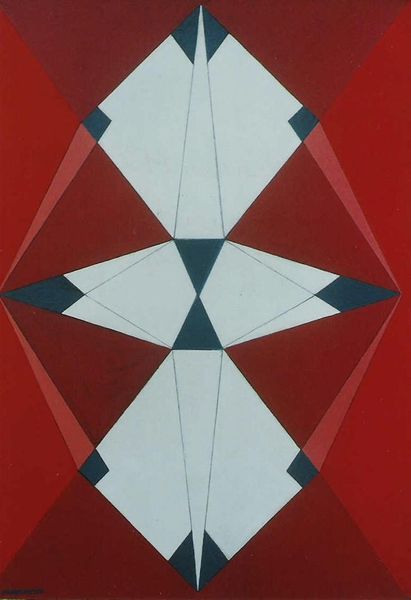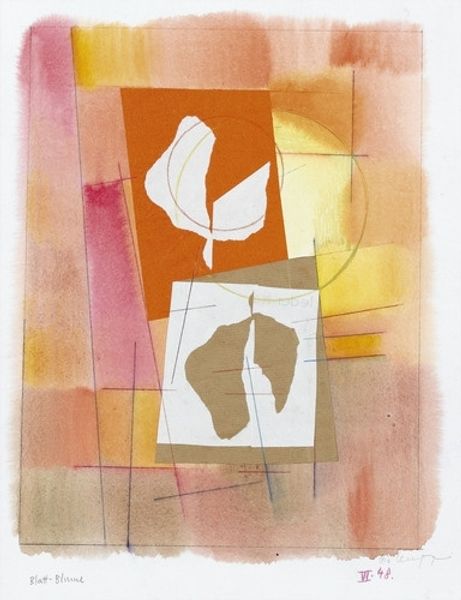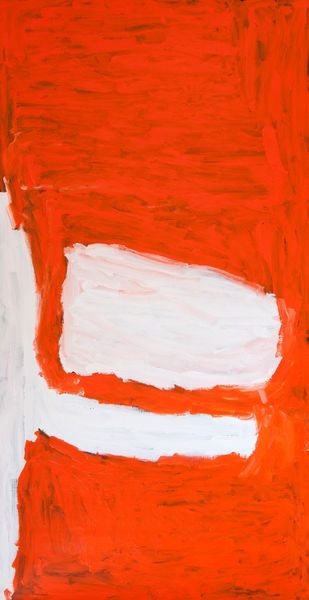
painting, oil-paint, ink
#
portrait
#
cubism
#
painting
#
oil-paint
#
ink
#
abstraction
#
early-renaissance
Copyright: Public domain
Curator: Josef Capek painted "Girl's Head," or "Dívčí hlava," as it was originally named, in 1914 using oil paint and ink. What's your immediate take on it? Editor: It feels startlingly direct. All angles and flattened planes. It's a head reduced to its barest geometric essence, a pink triangle balanced on a brown triangle, a white triangle on top. I keep wanting to fill in what isn't there, give her eyes, dimension, but the painting resists. Curator: Exactly! It's Capek flirting with Cubism, simplifying form, yes, but also exploring something deeper about representation itself. Look how the colours amplify the feeling! Those strong reds and pinks… it gives a definite tone to the figure. Editor: The "girl" feels incredibly sanitized, doesn't she? I mean, think about 1914... the looming war, anxieties about the changing role of women, shifting social structures. Abstraction, like this, could be a way of both acknowledging and defusing those anxieties, presenting an idealised and palatable image. A contained image of femininity, neat, without nuance. Curator: That’s an interesting take. To me, there's a primal quality here too. Those almost crude lines… the simplified forms… I see him almost digging down to an elemental concept of "girl." As if, at some base level, all faces might just resolve into these few, bold shapes. Almost like deconstructing to reveal essence rather than just erase personality, even if the effect has unintended ramifications. Editor: But who defines that "essence," though? Consider that a man, during a very specific period, reduces this subject to shapes devoid of individual expression. The work begs the question of who has the power to define and distill identity, especially female identity? Are we seeing an attempt at universality, or a statement on male authority in art? It feels unsettling. Curator: I think perhaps it’s a tightrope walk, actually. On one hand, yes, a flattening. And then, in a very subtle tension within the piece, a resistance to the flattening. I like that uncertainty, and the fact that, more than a century later, it still stimulates robust conversations like ours. Editor: Indeed, its power lies in those very tensions. A historical document and provocation all at once, showing us as much about its era’s assumptions as its artistic innovations. I wonder what another painter would have captured about this particular subject.
Comments
No comments
Be the first to comment and join the conversation on the ultimate creative platform.
